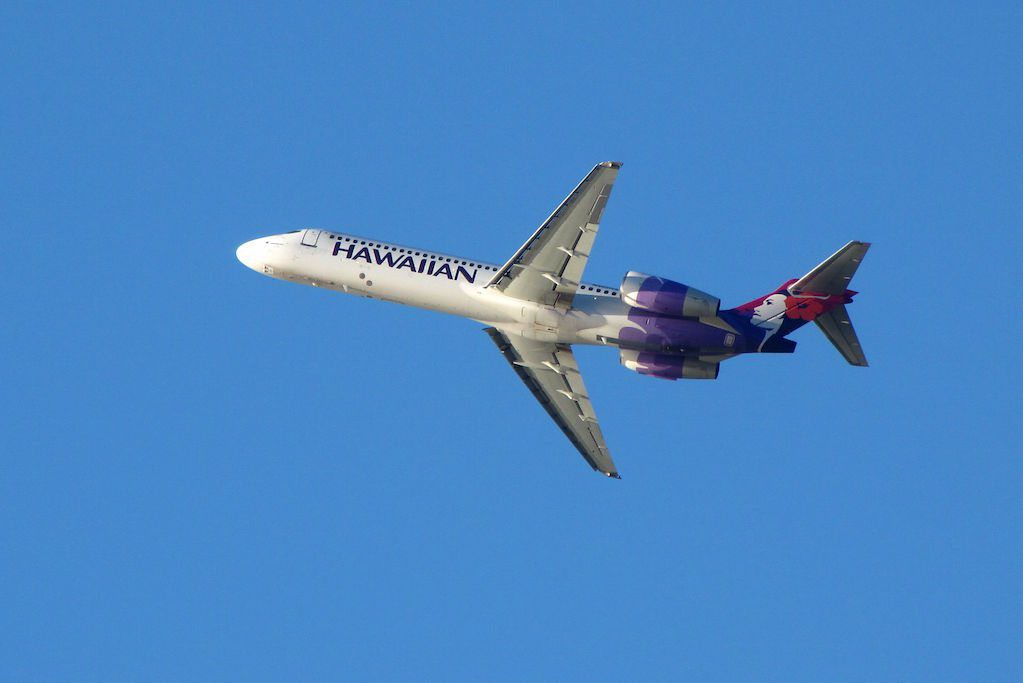Skift Take
Hawaiian Airlines executives are talking a big game about how they're ready for competition from Southwest Airlines. Is it true? Or are Hawaiian's executives nervous behind the scenes as they prepare for Southwest's Hawaii expansion?
Hawaiian Airlines doesn’t know more about Southwest Airlines’ plans fly short-haul routes in Hawaii than the public, but the carrier is betting it has the right aircraft and route structure to withstand new competition, its chief financial officer said Tuesday at an investor event.
“We are not strangers to competitors in the inter-island market.” Hawaiian CFO Shannon Lei Okinaka said Tuesday at the Bank of America Merrill Lynch 2018 Transportation Conference. “We have competed against different competitors with different aircraft types and have come out ahead each time.”
Southwest has been coy, saying only it plans to fly inter-island routes at some point after it launches longer flights from four California cities — Oakland, San Jose, San Diego and Sacramento, to airports on four Hawaiian islands. Southwest has not said how many short-haul routes it will fly, or which routes it might serve.
Hawaiian is accustomed to competing with nearly every major U.S. airline between the Mainland and Maui, Oahu, Kauai and the island of Hawaii. Hawaiian has performed well financially even as several carriers, including United Airlines and Alaska Airlines, have expanded. Hawaiian generated $28.5 million in net income for the first quarter.
Inter-island flying is another matter. Hawaiian has a near-monopoly on the routes, operating them almost like a public utility, albeit one with market-driven fares. It flies more than 170 short-haul departures per day, sometimes as often as one every four minutes. Okinaka, compared air routes to the network of the “tunnels and the ferrys, the buses, the trains, the subways” along the East Coast. Some passengers commute by plane.
Like Hawaiian executives, investors can’t determine the threat to the airline’s financials until they know more about what Southwest plans. But they could be slightly worried, judging by the company’s stock price. Between May 2 — the day before Southwest confirmed inter-island flying — and Tuesday’s close, Hawaiian’s stock price has dropped about 9 percent.
Hawaiian Should be OK
Conventional wisdom suggests Southwest might not threaten Hawaiian’s short-haul franchise. Perhaps, this thinking goes, Southwest will operate some flights within Hawaii at peak times — before and after the jets fly to California. A Southwest aircraft might fly from Sacramento to Honolulu, then to Maui, and then back to Honolulu, before returning to the West Coast.
It’s also possible, though less likely, that Southwest would prioritize short-haul Hawaiian service, building a true competitor to Hawaiian.
“I think it’s two different situations when you’re talking about Southwest making a huge investment, bringing 10 to 12 737s into the market and creating… a system, ” Okinaka said. “That’s a completely different scenario than some tag flying as they’re repositioning aircraft amongst the islands. I still think either way, we have the right aircraft. We have the right schedule. We have already made a lot of those investments that need to be made in the business, in the community.”
In an email, Southwest spokesman Brad Hawkins acknowledged, “our public commentary is thus far limited,” but said the airline would have more to share soon “so that facilities and technology work can begin – and so that our customers can start regarding Southwest for their long-term travel planning for Hawaii.”
For now, he said only, “we intend to offer inter-island service in some combination and scale,” among airports in Honolulu, Maui, Kona and Lihue.
Hawaiian Has an Aircraft Advantage
Of all Hawaiian’s advantages, it’s possible its fleet is the biggest. On the short-routes, Hawaiian flies the Boeing 717, an aircraft typically capable of flying many more times in one day than a Boeing 737.
The 717, which Boeing stopped making in 2006, flies up to 15 cycles per day for Hawaiian — each cycle is one-takeoff and one-landing — in a cost effective and safe manner. The average airliner cannot, which is not usually a problem, because airlines rarely need to fly an aircraft 15 times a day.
“Simply put,” Okinaka said, ‘The 717s were engineered for short-haul segments.”
Of course, Hawaiian also will be affected by the new competition on longer segments between Hawaii and the West Coast. But the airline has plenty of experience with new entrants, and Okinaka said this should be no different.
“As you’ve seen different battles along the West Coast by different airlines, Hawaii gets caught up in that,” she said. “Those are very highly competitive to begin with and we have held our own.”
This story has been updated to include comment from Southwest Airlines.
The Daily Newsletter
Our daily coverage of the global travel industry. Written by editors and analysts from across Skift’s brands.
Have a confidential tip for Skift? Get in touch
Tags: airline innovation, hawaiian airlines, southwest airlines
Photo credit: Hawaiian Airlines is betting that the Boeing 717 — the aircraft pictured here — will help it fend off challenges from Southwest Airlines. redlegsfan21 / Flickr
